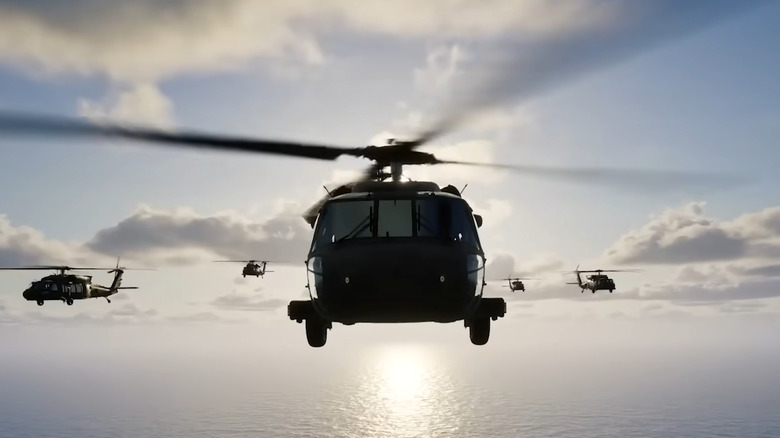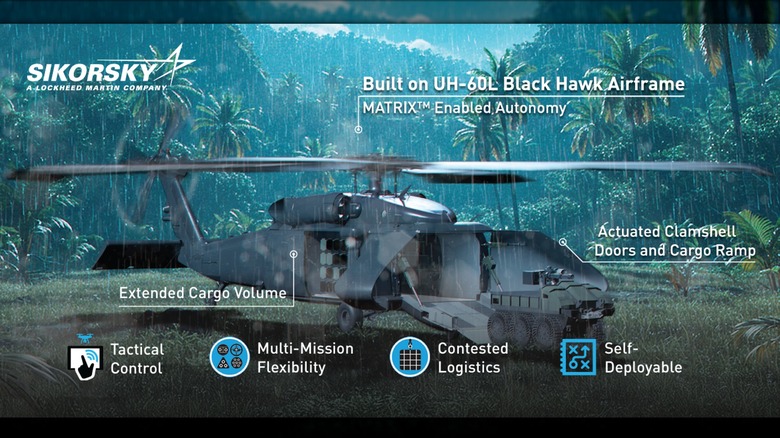The Blackhawk Helicopter Now Has An Autonomous Clone - Here's What We Know About The Aircraft
The UH-60 Black Hawk helicopter is one of the most-used and storied choppers in use by the United States military. It's also exported all over the world and is a true workhorse chopper for the U.S. Army. There are tons of variants, which is one of the reasons the Black Hawk has been in operation since it was first introduced in 1979. You might think that the aircraft's producer has bled the airframe as much as possible in delivering multiple variants, but you'd be wrong.
The latest variant of the UH-60 is unlike any other, and it's a potential game changer. The U-Hawk is the name Sikorsky (a subsidiary of Lockheed Martin) has given to its fully autonomous UH-60 variant. The U-Hawk is touted as "Unpiloted. Uncrewed. Undaunted" on the company website, and it's been given the temporary designation S-70UAS. It is indeed an uncrewed aerial system (UAS), as the U-Hawk has no need for a physical pilot or crew.
It can carry all kinds of cargo into and out of hostile areas. Additionally, it is easily controlled by a single soldier on the ground. By eliminating the need for a crewed cockpit, the U-Hawk boasts 25% more cargo space than its predecessor. Additionally, they can fly on their own or cruise through the sky in formation. It took only 10 months for Sikorsky to come up with the concept and put the U-Hawk into production. The prototype is scheduled to take its first flight in 2026, and should everything prove effective, it could enter the U.S. military's inventory soon after that.
Why bother converting a proven aircraft into a UAS?
There are more than 5,000 Black Hawk helicopters in existence, which begs the question, "Why bother making them automated at all?' After all, they have a proven track record in and out of combat operations on multiple fronts, so it's a fair question. Putting pilots and crewmembers onto an aircraft introduces risk, and removing them entirely increases storage space. That alone makes it a worthwhile endeavor, but it's also true that the future of warfare is all about drones.
The conflicts of the 21st century have proven this, so militaries around the world are hard at work automating aircraft and creating new systems. The U-Hawk can move easily into and out of a target area, where it can pick up or drop off up to 10,000 lbs. of supplies. It can also carry a HIMARS rocket pod system, uncrewed ground vehicles, and more. The onboard software and remote hardware makes it possible for anyone to fly them; you don't need a pilot.
A soldier can use a tablet to command a U-Hawk remotely, tasking it for a variety of missions. It's unclear if the U-Hawk will carry personnel, but it certainly has the cargo capacity should the need arise, though none of the mockups show seats in the hold. According to Sikorsky, which also produces the UH-60 Black Hawk, the U-Hawk boasts a 1,841 mile self-deployment, can carry six HIMARS rockets internally, has 95% commonality with existing UH-60s, ensuring easier maintenance, and soldiers need only a single tablet to control them.

